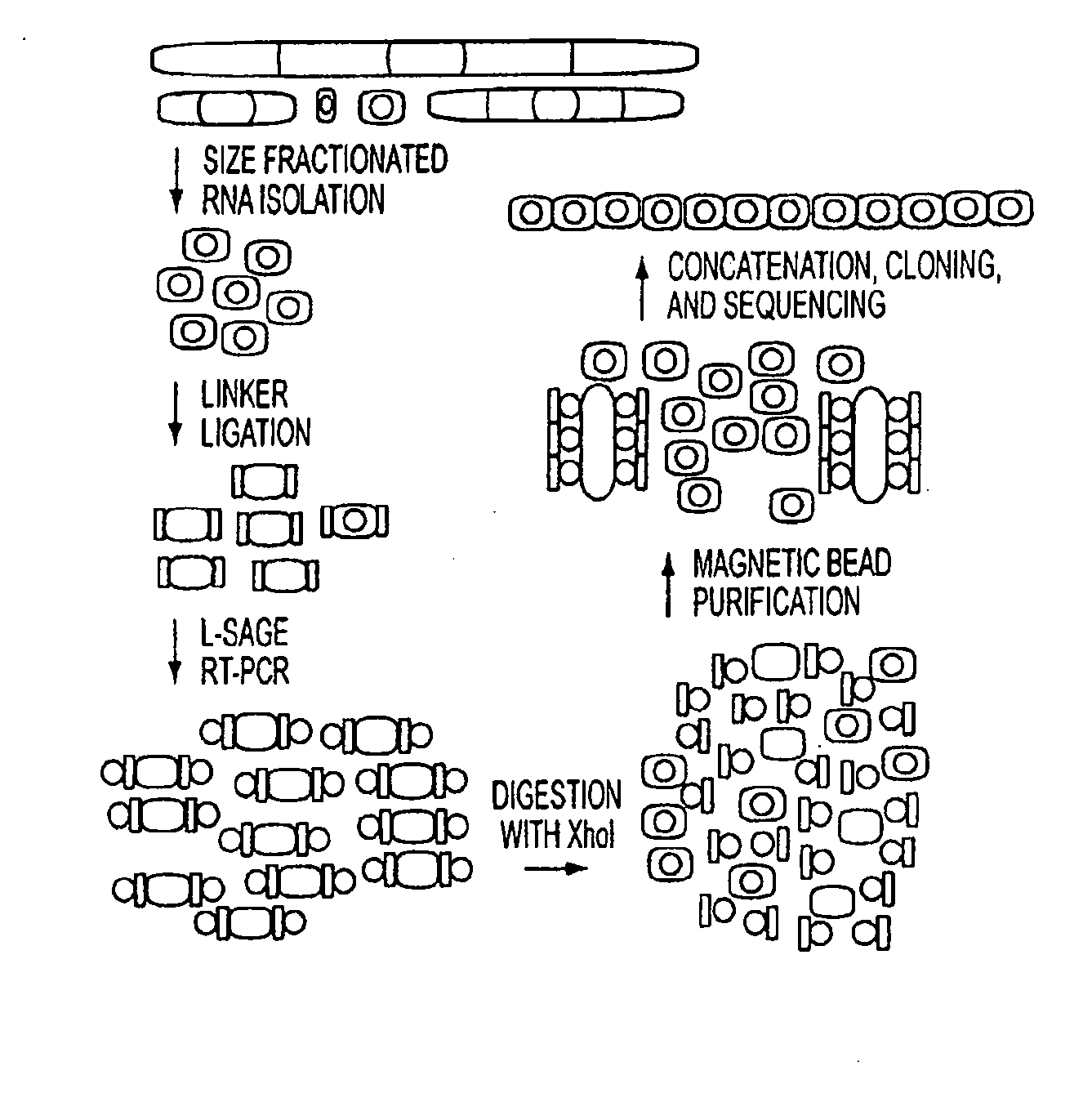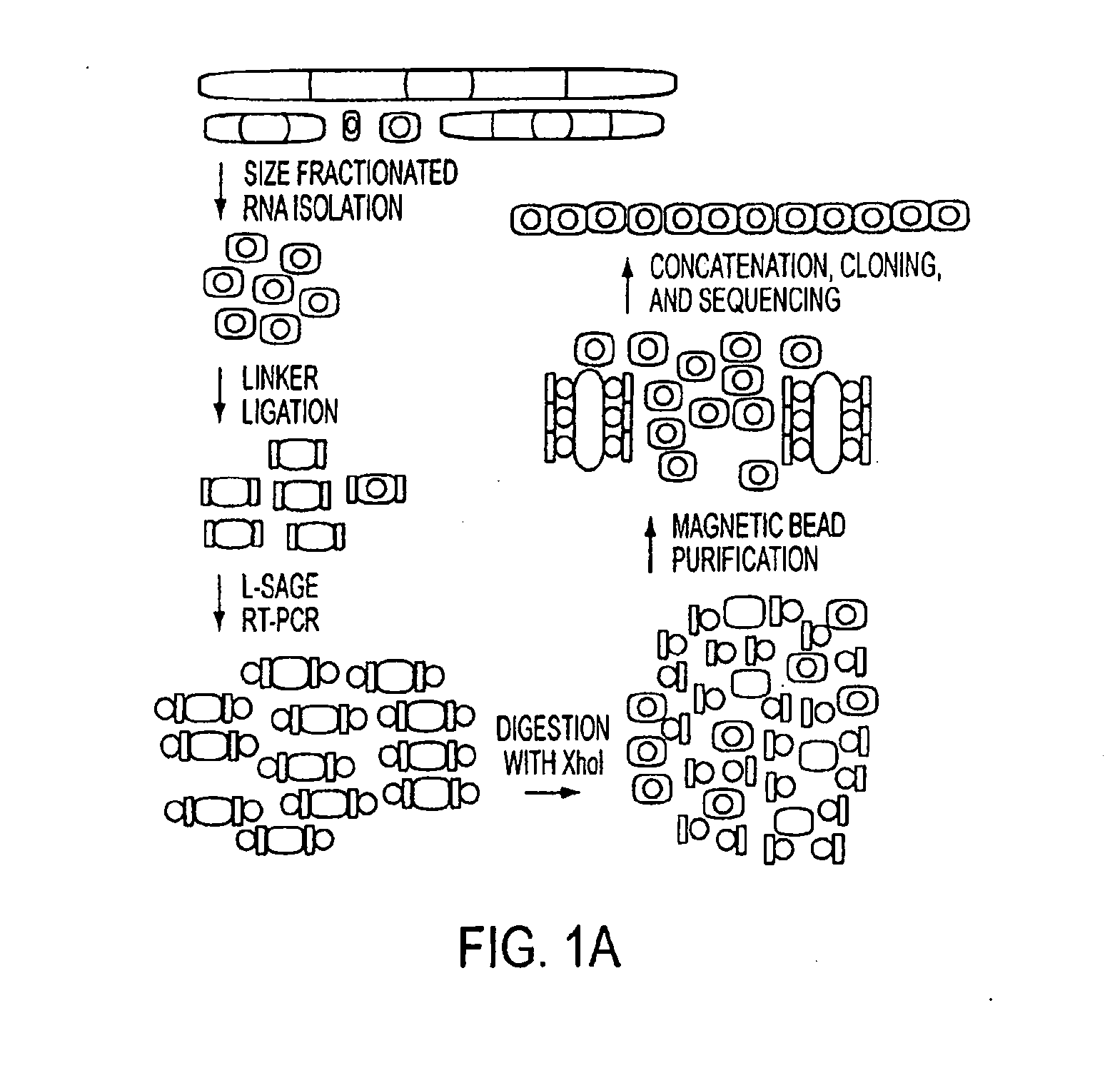Micrornaome
a micrornas and microRNA technology, applied in the field of micrornas, can solve the problems of low throughput of this approach and predictions that may not be all legitimate, and achieve the effects of inhibiting and increasing the expression of the target gene in the cell
- Summary
- Abstract
- Description
- Claims
- Application Information
AI Technical Summary
Benefits of technology
Problems solved by technology
Method used
Image
Examples
example 1
Materials and Methods
[0090]Cell Culture and Colorectal Tissue. Colorectal cancer cell lines HCT116, DLD1, RKO, CACO-2, SW480, and their derivatives were cultured in McCoy's SA medium supplemented with 10% FCS and penicillin / streptomycin. Samples of colorectal cancer tissue and matched normal colonic epithelium were obtained from patients undergoing surgery and were frozen immediately (<10 min) after surgical resection. Acquisition of tissue specimens was performed in accordance with Health Insurance Portability and Accountability Act of 1996 (HIPAA) regulations.
[0091]RNA, DNA, and RNA / DNA Oligonucleotides. RNA and RNA / DNA oligonucleotides were obtained from Dharmacon Research (Lafayette, Colo.). Deoxyribonucleotides are preceded by a “d.” miRAGE 3′ linker: 5′-phosphate-UCUCGAGGUACAUCGUUdAdGdAdAdGdCdTdTdGdAdAdTdTdCdGdAdGdCd AdGdAdAdAN3-3′ (SEQ ID NO: 1875); miRAGE 5′ linker: 5′-dTdTdTdGdGdAdTdTdTdGdCdTdGdGdTdGdCdAdGdTdAdCdAdAdCdTdAdGdGd CdTdTdACUCGAGC(SEQ ID NO: 1876); 18-base RNA st...
example 2
[0102]Genome-Wide miRNA Analysis with miRAGE. Using miRAGE, we analyzed 273,966 cDNA tags obtained from four human colorectal cancers and two matching samples of normal colonic mucosae. Comparing these tags to the existing miRNA database identified 68,376 tags matching known miRNA sequences. These represent the largest collection of human miRNA sequences identified to date, because all previous human miRNA cloning analyses in aggregate have analyzed <2,000 miRNA molecules. The expression level of the miRNAs detected by miRAGE ranged over 4 orders of magnitude (from 23,431 observations for miR-21 to 20 miRNAs that were observed only once), suggesting this approach can detect miRNAs present at varied expression levels. The identified miRNA tags matched 200 of the mature miRNAs present in the public miRBase database (2) (Table 2, which is published as supporting information on the PNAS web site), and 52 of these were expressed at significantly different levels between tumor cells and n...
example 3
[0104]Evaluation of Novel miRNAs. We next focused on evaluating whether the miRAGE tags not matching known miRNAs might represent novel miRNA species. As a first step, miRAGE tags were compared with existing gene databases to exclude sequences matching known RNAs, including noncoding RNAs, mRNAs, and RNAs derived from mitochondrial sequences (FIG. 1B). The remaining tags were then evaluated in silico for the ability of their putative precursor sequences to form hairpin structures that were thermodynamically stable. The miRAGE approach in combination with these steps were expected to fulfill both the “expression” and “biogenesis” criteria recently put forward by Ambros et al. (18) in an effort to maintain a uniform system for miRNA annotation. Using these criteria, a total of 168 tags were identified that corresponded to putative novel miRNAs.
PUM
 Login to View More
Login to View More Abstract
Description
Claims
Application Information
 Login to View More
Login to View More - R&D
- Intellectual Property
- Life Sciences
- Materials
- Tech Scout
- Unparalleled Data Quality
- Higher Quality Content
- 60% Fewer Hallucinations
Browse by: Latest US Patents, China's latest patents, Technical Efficacy Thesaurus, Application Domain, Technology Topic, Popular Technical Reports.
© 2025 PatSnap. All rights reserved.Legal|Privacy policy|Modern Slavery Act Transparency Statement|Sitemap|About US| Contact US: help@patsnap.com



